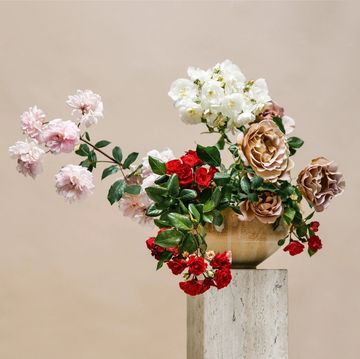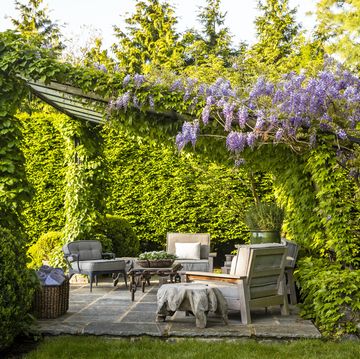How To Make Your Christmas Plants Thrive 'Til Santa Arrives
Keep your holiday plants beautiful all season long — and beyond.
Holiday greenery and flowers add color and life to your home on a chilly winter's day. But if yours never seem to last once you get them home, you may be treating them all wrong. "Many holiday plants can thrive for years with the right conditions and care," says Tim Pollak, outdoor floriculturist with the Chicago Botanic Garden. Here's how to ensure your favorites won't end up as the Ghost of Christmas Past before the holidays ever arrive.
Poinsettia
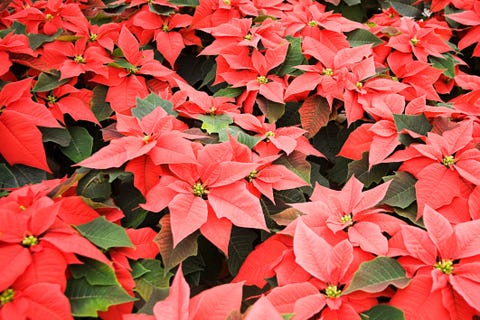
"Choose plants that have little yellow flowers, called cyathia, in the center of the colored leaves," says Gary Vollmer, product and technical manager with Selecta North America, a poinsettia breeder. If you chose a plant that's shedding pollen or the yellow flowers have dropped off, it's past its prime and won't last through the season.
HOW TO CARE FOR IT
Cover your poinsettia when bringing it home, especially if temperatures are in the 20s or lower, and don't leave it in the car while you run errands. Water when dry to the touch. "The most reliable way to kill them is root rot from overwatering," says Vollmer. Remove the foil or pot cover (or poke holes in it) that's around the plant when you buy to ensure it's not sitting in water. Water sparingly, then let drain completely in the sink.
KEEP OR TOSS?
Your call! To promote flowering next year, place in a bright window after the holidays. After April 1, remove the colored leaves (called bracts). Shape as needed by pinching tips until early August. Feed every two weeks with a standard fertilizer. In September, move to a room where it gets only Mother Nature's light with absolutely zero artificial light after sunset. In early October, move back to your regular living area, and cross your fingers.
Christmas Cactus
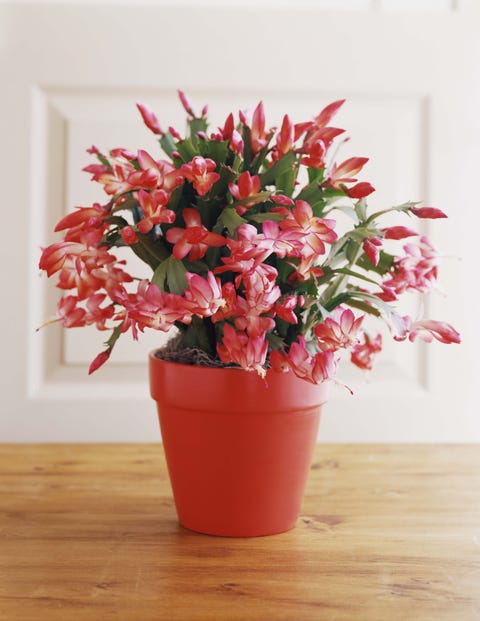
"These are one of the hardier holiday plants and can last for years and years," says Pollak. Different species bloom at different times of year including Thanksgiving and Easter.
HOW TO CARE FOR IT
Place in a bright window. Flower buds that drop before opening may be caused by warm temperatures or overly dry soil. Water when dry, but don't let the plant sit in water. "They're a succulent and the pads get soft and mushy if you overwater," says Pollak. Check pot every seven to 10 days.
KEEP OR TOSS?
Keep! To get flowers to set next year, take the plant outdoors for about three weeks in late summer to early fall, bringing it indoors before temperatures dip into the mid-40s. They prefer to be pot-bound, so no need to repot for years. Fertilize monthly between April to October.
Cyclamen
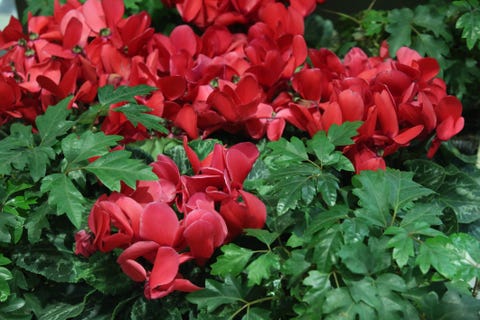
These cool-season plants tolerate temperatures into the 40s, which is why they're popular in the winter months. They can bloom for more than eight weeks with the right conditions.
HOW TO CARE FOR IT
Place in medium diffused, not super-bright, light. Avoid warm drafts to prolong flowering, and deadhead spent flowers and yellow leaves by pulling off the entire stem near the foliage line. Water from the base, not from the top, by setting it in a saucer of water and letting it absorb for 15 to 20 minutes, then remove the plant. Avoid splashing water on the leaves.
KEEP OR TOSS?
Toss! It's tough to get cyclamen to re-bloom.
Rosemary
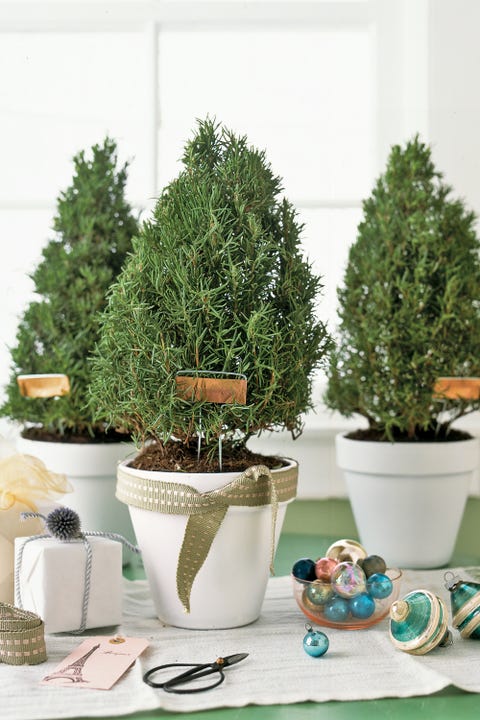
This plant often is sheared into a topiary or pyramidal shape to mimic a Christmas tree. Its fresh piney scent is invigorating in the middle of a dreary winter and is a savory addition to stews and roasts.
HOW TO CARE FOR IT
Place in bright light in a south or west-facing window. The more light the better or it tends to drop leaves. Keep the soil evenly moist by checking the pot every few days. "The number one most common mistake with rosemary is underwatering," says Pollak. These plants are Mediterranean, but they don't like to dry out completely.
KEEP OR TOSS?
Keep! Move it outside as soon as your area is frost-free, typically sometime in May. Fertilize every few months with a slow-release pellet-type product, and let it grow naturally. You don't need to maintain the topiary or pyramidal shape unless you prefer it.
Amaryllis
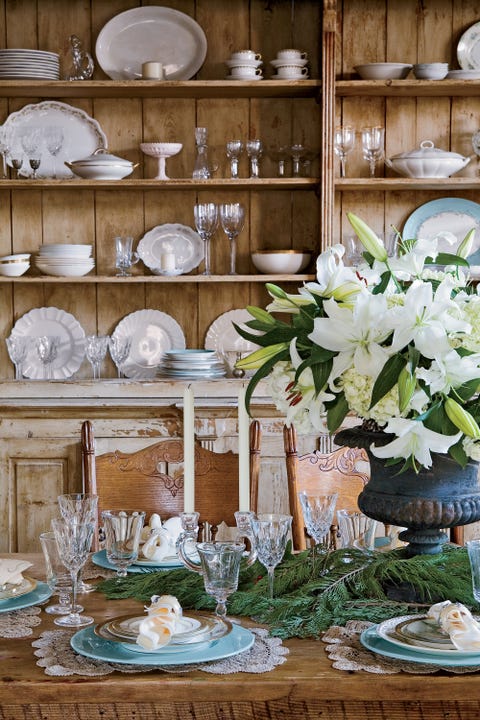
These exotic-looking flowers bloom about four to six weeks after you plant the bulb. Some varieties send up the flower first before the foliage.
HOW TO CARE FOR IT
Place in bright light, not hidden away on the coffee table where low light levels may cause it to grow floppy and topple. Turn the pot every few days to help the plant grow upright. Keep the soil evenly moist, but don't drown it.
KEEP OR TOSS?
Keep! Once the flowers fade, cut the stalk but keep the leaves to help replenish the nutrients in the bulb. Move outside in a shaded area when the danger of frost is past. In late summer or early fall, let the plant go dormant and place in the garage or basement. Cut off the yellowed leaves, and ignore it (no water!) until November when you begin watering and start the growing cycle again.
Paperwhites
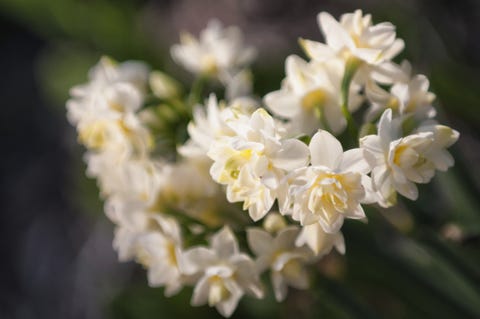
These often come in kits or loose bulbs with a planting medium. Pot them up and enjoy the fragrant blooms in two to three weeks.
HOW TO CARE FOR IT
Keep them in a cool but sunny location. Locations that are too warm cause leggy growth. As soon as the flowers emerge, tie the stems to a decorative stake to prevent them from toppling over. Water regularly so that the soil stays evenly moist.
KEEP OR TOSS?
Toss! They're inexpensive enough to buy again next year, and they're tropical so they can't be replanted outdoors.
Phalenopsis Orchid
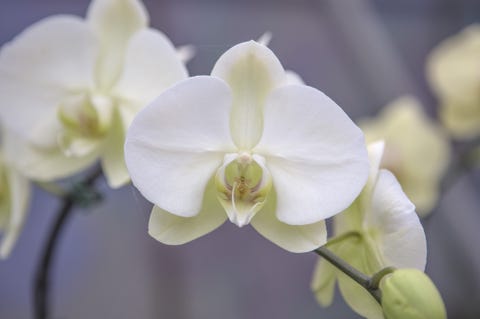
These delicate-looking plants are not as fragile as they appear and will bloom for months with little care, says Pollak.
HOW TO CARE FOR IT
Give them bright, indirect light. They generally prefer it on the cooler side indoors. Avoid sudden temperature changes, which causes buds to drop. Water once a week until water comes out the bottom of the pot (they're usually planted in a soil-less planting medium).
KEEP OR TOSS?
Keep! Keep in a east or west window. Feed with a specific orchid fertilizer. Water regularly but in late summer, let the leaves dry out or wrinkle a bit to trigger the plant setting new buds. Once you see a new stem, start watering again but stop fertilizing.
Norfolk Pine
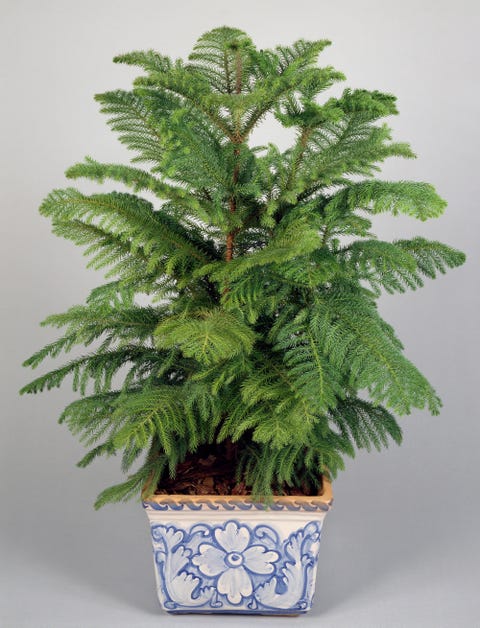
This long-lasting plant is native to the South Pacific so it cannot be planted outdoors in most of the country, says Pollak.
HOW TO CARE FOR IT
Keep it medium-bright light such as an east or west-facing window. It needs about six to eight hours of light per day. Light conditions that are too low may cause lower branches to drop. Water when dry to the touch, but don't let it dry out too much or you'll get loads of brown needles.
KEEP OR TOSS?
Keep! Every two years, refresh the planting medium by topdressing with new soil. It prefers to be pot-bound. You can take it outdoors in late spring if you like, but keep it shaded. Bring inside before temps drop lower than 40 degrees. Fertilize every 6 to 8 weeks with a standard fertilizer. Toss when it gets too leggy because it won't re-grow lower branches that are lost.
Frosty Fern

These adorable tiny fern-like plants tinged with white are a newcomer to the holiday lineup. They're increasingly available at high-end grocers and nurseries.
HOW TO CARE FOR IT
Place in low to medium light. They prefer consistent humidity, so they do well in terrariums. Keep the soil slightly moist. Use room temperature, not cold, water. Water from below by placing in a saucer of water, letting it absorb for 15 minutes, then removing the plant.
KEEP OR TOSS?
Keep, if you're lucky. The plant is on the finicky side and often dies long before you get tired of it. No worries. Enjoy its delicate form as long as you can.
Photo: Miss Mustard Seed
Watch Next


British Royal Family at 2023 Chelsea Flower Show

10 Plant That Are Safe for Cats

9 Summer Flowers and What They Symbolize

What to Plant in May



